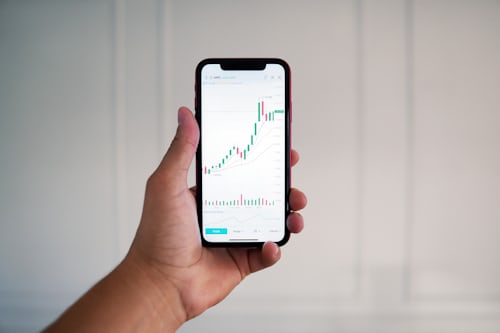The value of an option at the end of its life is easy to determine: It either expires worthless or - in the usual case of cash settlement - is settled at its intrinsic value. However, very few options and warrants are held to maturity. The valuation of options during maturity is familiar with the binomial model, also known as the Cox-Ross-Rubinstein model.
Cox-Ross-Rubinstein/Binomial model
Like most financial theory models, the binomial model assumes a laboratory environment. There are in the assumptions of the model:
- No transaction costs, taxes and margin requirements.
- no dividend payments in the underlying assets
- a constant, risk-free interest rate
The model also assumes that share prices are not continuously determined, but only at certain points in time. Therefore, the distinction between European and American options is not necessary.
A note on this: The early exercise right of American options is often overestimated by private investors. This is almost always due to the fear of not being able to realise accumulated profits and losing them again in the course of the market in Exness personal area. However, this intuitive perception is deceptive: the intrinsic value accumulated in the meantime can be realised at any time by selling (closing out) the option. Exercising the option prematurely, on the other hand, is not advisable under any circumstances, because this gives away the remaining time value without consideration.
Arbitrage portfolio for valuing options
To value an option, a risk-free portfolio is formed in the binomial model, consisting of a short position in a call option on share X and a (partially) credit-financed long position in share X. The arbitrage portfolio is used to calculate the fair value of the option. The appropriate price of the call option is calculated from this arbitrage portfolio.
For this purpose, the model assumes that the price of the shares in the portfolio can only assume two values at the end of the model observation period: One above the initial value and one below the initial value. Since the sold call option is quoted at the money in the initial situation, it either expires worthless at the end of the period or must be redeemed by the stock portfolio. Under these assumptions, the portfolio always assumes the same value regardless of the price development. With this knowledge, the value of an option can be determined relatively easily.
The Black & Scholes Model
In the 1970s, the two US economists Fischer Black and Myron Samuel Scholes published a model for valuing options, which is now considered the standard in options theory and is known as the "Black&Scholes" model. This model also assumes a perfect capital market. In addition, it assumes that the price changes in the underlying asset are normally distributed and stochastically independent (i.e. that a certain price movement does not change the probabilities of later price movements).
The model assumes that share prices behave like a geometric Brownian motion. The result is a differential equation that represents the price of an option as a function of the variables share price, strike price, market interest rate, expected volatility and remaining life. The partial derivatives of the function according to the individual variables yield the sensitivity ratios known in the jargon as "Greeks".

